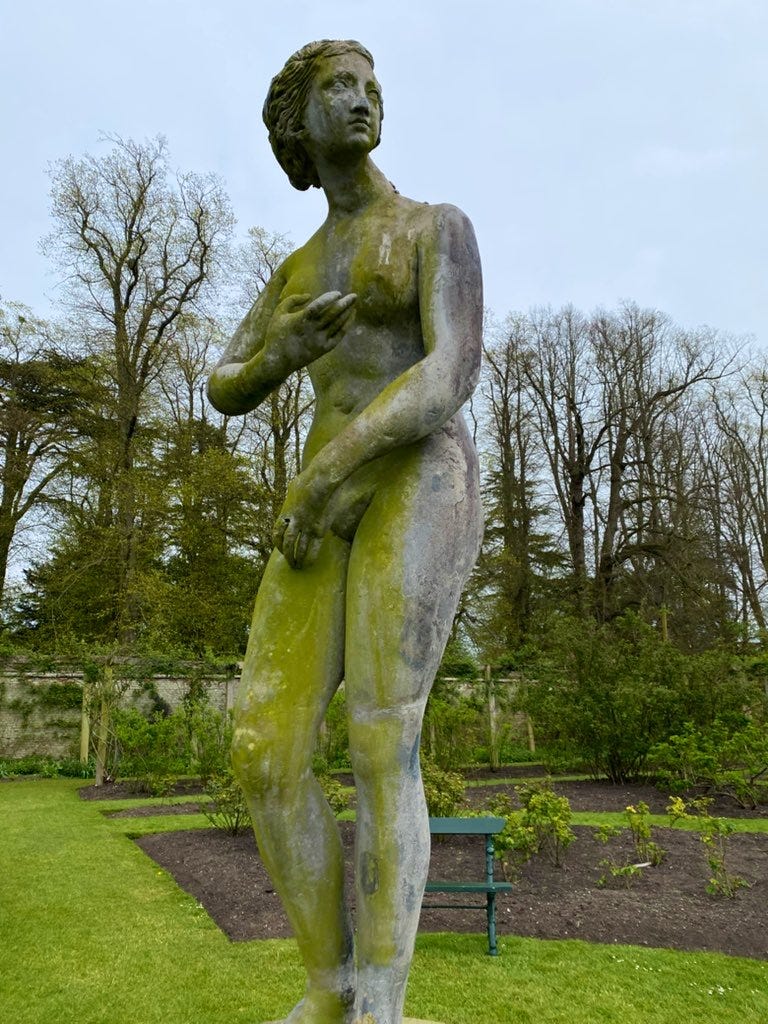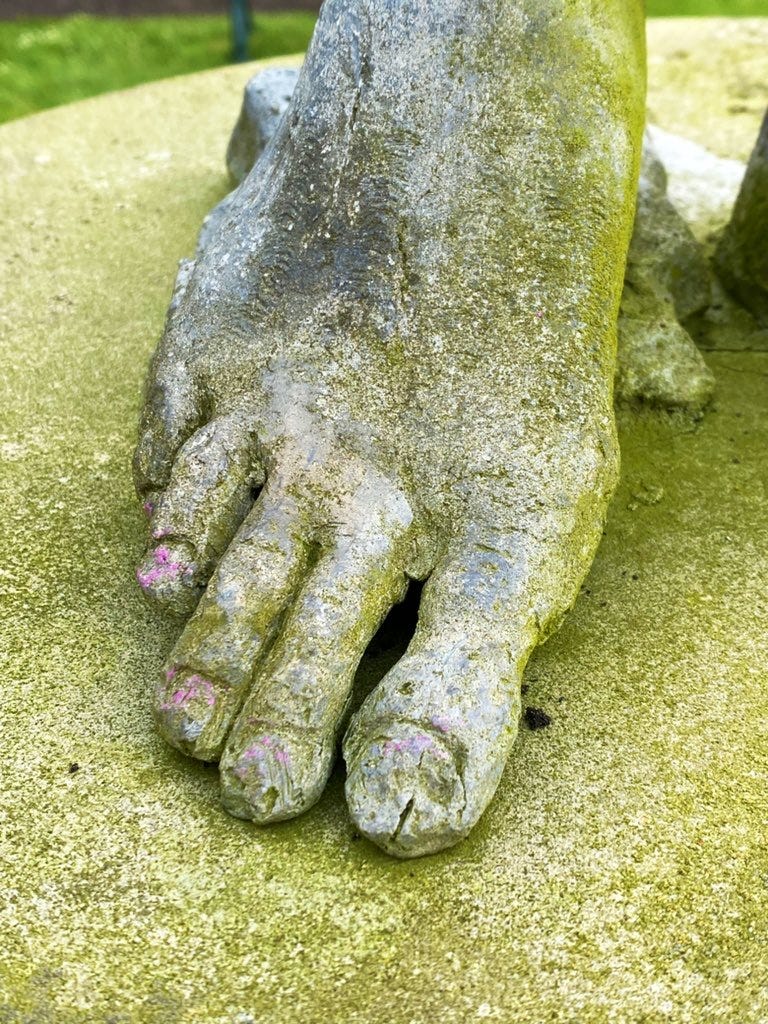In April, we returned to Castle Howard because I wanted to take a look at the painting inside the dome above the Great Hall depicting the Fall of Phaeton. But it was good timing because the Howard family has been busy renovating and rearranging aspects of the interior, including a complete rehang of the visitors’ entrance and a refurbishment / reimagining of several rooms, including the bedrooms. However, I have been wanting to share with you my pictures of Tapestry Drawing Room, which has just been returned to its former glory. It was completely burnt out in a fire in November 1940: the same disaster that brought the dome crashing into the Great Hall. Thanks to the persistence of George Howard, a restoration project was undertaken in the 1960s by Professor E. H. Thompson from the University of London, who oversaw the recreation of the dome, mainly using photographs from Country Life magazine.
Today we can enjoy the exterior of Vanbrugh’s building pretty much as he intended it, but it’s taken a bit longer for other fire-damaged rooms to be re-born. Thankfully, the tapestries were hanging elsewhere when Castle Howard’s Great Hall caught fire, and now they have been reinstalled in their original location, with the room decorated in an 18th-century style to match.
Castle Howard’s rooms are quite small compared to many stately homes, and the original interiors were, by all accounts, a riot of colourful damask hangings and highly decorated tapestries.1 The gun-metal grey doesn’t feel particularly authentic for an 18th-century interior, but it really works, providing an elegant contrast to the tapestries themselves. These were originally woven for the room in 1706 by John Vanderbank, a leading artisan of 18th-century textiles who ran a studio in Covent Garden - he was paid £40. Today, his work has been painstakingly conserved by Alison Stanton at her Northamptonshire studio using tiny invisible stitches.
I loved the entire room, but was particularly enchanted by the decoration around the central painting, Judgement of Paris, by Marco Ricci. The Earl of Manchester brought Ricci and his colleague, Giovanni Antonio Pellegrini, to London from Venice around 1709. The pair worked in Vanbrugh’s opera house in the Haymarket before following the architect to Castle Howard, where Pellegrini painted the Fall of Phaeton in the dome (recreated by Scott Medd in the abovementioned restoration project) while Ricci produced genre scenes for the overdoors.
All of the work at Castle Howard is impressive, but the Tapestry Drawing Room is undoubtedly the jewel in the crown. The whole restoration project - six years in the making and billed as ‘Castle Howards’ 21st-century Renaissance’ - is ready in time for the tercentenary of Vanbrugh’s death in March 2026. If he could see it now, I think he would be delighted.
Postscript:
After a thorough look of the interior, we went to inspect Vanbrugh’s Temple of the Four Winds and the absent plot where a Temple of Venus, by Hawsksmoor, once stood. The latter was built in the 1730s in the form of an open rotunda of eight Tuscan columns under an octagonal entablature and dome. The structure was dilapidated by the 1940s and - although widely reported on the internet as having ‘collapsed’ - it was actually demolished (a tree was felled onto it!) The statue of Venus was retained and can be seen today in the Rose Garden, so we also paid that a visit. One of the more unexpected finds was that, at some point, the kiddie crayon crew had decided to give her a pink pedicure!
Charles Saumarez Smith, The Building of Castle Howard (London: 1997), p. 90.











Mmm... as ever struck, and thankful being, by your blasts out loud and proud of the things past Annette.
Bayeux Tapestry, soonish to be brought back across La Manche to Blighty fora period of temporary repatriation in a time seeking soothing rapprochement of a culturally inclined sort, nudges my imaginative mind into wondering "how would The Lichfield Rambler set about delivering on a commission to create a 'Lichfield Tapestry' looking towards a 900 years forward horizon rather harking back to Times Past when even Chad was, in heritage terms, but a lad?
You really do write so well of what you are passionate about, so why not write into that future into which neither thee nor me will be alive, thinking and kick ideas about?
Is that a hint of nail varnish on the statue’s toenails?